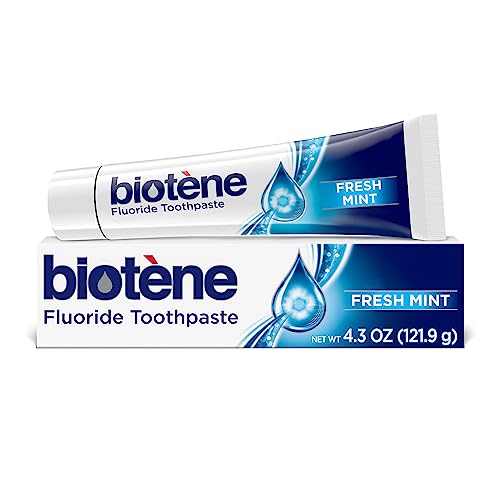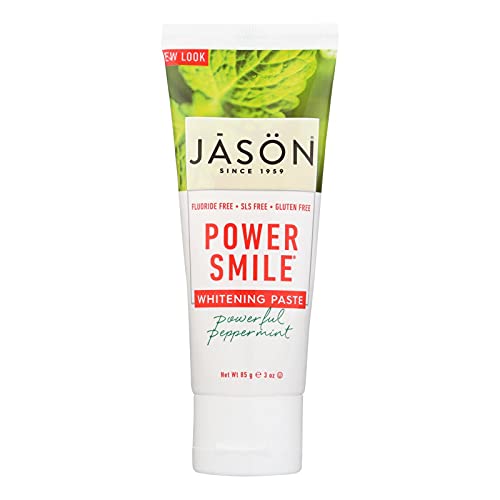In our step-by-step guide, “How to know if I need to switch to a gentle toothpaste,” we will explore the topic of gentle toothpaste and help you determine if it’s the right choice for you. We understand that dental health is important to everyone, and sometimes certain toothpastes can be too harsh for our teeth and gums. With this guide, we aim to provide you with the necessary information to make an informed decision about whether or not to switch to a gentle toothpaste.
Gentle Toothpaste: A Soothing Oral Care Option
Step 1: Notice any sensitivity
Pay attention to any tooth sensitivity you may be experiencing, especially when consuming hot, cold, or sweet foods and drinks. Notice if you feel a sharp pain or discomfort in your teeth when eating or drinking these types of items. Take note of which specific teeth are sensitive and the severity of the sensitivity.
Step 2: Consider enamel erosion
Evaluate if your tooth enamel has eroded over time due to factors such as aggressive brushing, acidic foods, or grinding your teeth. Look for signs such as increased tooth sensitivity, yellowing or discoloration of the teeth, or rough or pitted surfaces on the enamel. If you notice any of these symptoms, it is important to visit a dentist who can assess the extent of the enamel erosion and recommend appropriate treatment options.
Step 3: Evaluate gum sensitivity
To assess if your gums are sensitive or prone to bleeding when brushing or flossing, gently brush your teeth and observe any signs of irritation or bleeding. If your gums appear red, swollen, or bleed easily, it may indicate gum sensitivity. In such cases, we recommend switching to a gentle toothpaste specifically designed for sensitive gums to help alleviate any discomfort and promote oral health.
Step 4: Assess toothbrush abrasion
To assess toothbrush abrasion, first, examine the hardness of your toothbrush bristles. Check if they are too stiff or firm. Second, evaluate your brushing technique and determine if you apply excessive force when brushing your teeth. Brushing too vigorously can result in gum recession and tooth sensitivity. Adjust your brushing technique and consider using a toothbrush with softer bristles to protect your gums and teeth.
Step 5: Check for allergies
To determine if you have any allergies or sensitivities to certain ingredients commonly found in regular toothpaste, such as sodium lauryl sulfate (SLS) or artificial flavors, start by carefully reading the ingredient list on the toothpaste packaging. Look for these specific ingredients and take note of any reactions you may have had in the past. If you are unsure, it is best to consult with a healthcare professional or dentist who can help you identify and manage any potential allergies or sensitivities.
Step 6: Consult with your dentist
To schedule a dental appointment, follow these steps:
- Contact your dentist’s office by phone or email.
- Explain that you would like to discuss your concerns and evaluate your oral health.
- Provide any necessary information, such as your name, contact details, and preferred appointment times.
- Be prepared to answer any questions the office may ask regarding your dental history or specific concerns.
- Confirm the appointment date and time.
- Mark it on your calendar or set a reminder to ensure you don’t forget.
- On the day of the appointment, arrive a few minutes early to complete any necessary paperwork.
- During the appointment, share your concerns and ask any questions you may have.
- Listen carefully to your dentist’s recommendations and ask for clarification if needed.
- Take note of any follow-up appointments or treatments that may be necessary.
Remember, consulting with your dentist is an essential step in maintaining good oral health and addressing any concerns you may have.
Step 7: Research gentle toothpaste options
To explore different gentle toothpaste options, follow these steps:
- Start by researching various brands and types of gentle toothpaste available in the market.
- Look for products specifically designed for sensitive teeth and gums.
- Read customer reviews and ratings to get a better understanding of their effectiveness.
- Consider consulting with your dentist or dental hygienist for recommendations on gentle toothpaste.
- Compare the ingredients and benefits of different brands to find the one that suits your needs best.
- Take note of any additional features such as fluoride content or natural ingredients.
- Once you have gathered enough information, make an informed decision on which gentle toothpaste to purchase.
Remember, finding the right toothpaste for your specific needs may require some trial and error. Don’t be discouraged if you don’t find the perfect match right away. Keep exploring and experimenting until you find the toothpaste that works best for you.
Step 8: Read product labels
To find a gentle toothpaste, start by reading the product labels. Look for toothpastes that are free from harsh ingredients, such as sodium lauryl sulfate or alcohol. Instead, opt for toothpastes that contain ingredients like fluoride to promote oral health. Make sure to carefully read the labels of potential options to ensure they meet your needs.
Step 9: Test the toothpaste
To test the toothpaste, follow these steps:
- Apply a small amount of the chosen gentle toothpaste to your toothbrush.
- Brush your teeth and gums gently in a circular motion for two minutes.
- Pay close attention to any changes in sensitivity or discomfort.
- Rinse your mouth thoroughly with water.
- Wait for a few hours and observe if there are any adverse reactions, such as increased sensitivity or discomfort.
- If you experience any negative effects, discontinue use and consult with a dentist.
- If there are no adverse reactions, continue using the toothpaste as directed.
Remember, it’s important to test a small sample of the toothpaste first to ensure it is suitable for your teeth and gums.
Step 10: Switch to gentle toothpaste
- If you have experienced positive results and have noticed a reduction in tooth sensitivity or gum irritation, it is time to make the switch to a gentle toothpaste.
- Incorporating a gentle toothpaste into your daily oral care routine can help maintain the progress you have made and prevent further discomfort or irritation.
- Look for toothpaste specifically formulated for sensitive teeth or gums, as these are designed to be gentler on your teeth and gums.
- When making the switch, ensure that you are brushing your teeth twice a day for two minutes each time, using a soft-bristled toothbrush.
- Apply a pea-sized amount of toothpaste to your toothbrush and gently brush your teeth using circular motions, paying attention to all surfaces of your teeth and gums.
- Rinse thoroughly after brushing, and avoid eating or drinking anything for at least 30 minutes to allow the toothpaste to have maximum effect.
- Remember to continue flossing daily and using mouthwash as part of your oral care routine.
- If you experience any discomfort or sensitivity after switching to a gentle toothpaste, consult your dentist for further guidance.
Making the switch with care
In conclusion, it is important to consider various factors when deciding if you need to switch to a gentle toothpaste. Evaluating tooth sensitivity, enamel erosion, gum sensitivity, toothbrush abrasion, and allergies can provide valuable insights. Consulting with your dentist can also offer professional advice tailored to your specific needs. Additionally, conducting research and testing different gentle toothpaste options can help you find the one that works best for you. Remember, taking care of your teeth and gums with a gentle toothpaste can significantly improve your oral health and overall comfort. We encourage you to prioritize your dental well-being and make the switch if necessary.
Essential Supplies
Gentle Oral Care Advice
Step-by-Step Guide to Using Gentle Toothpaste
- Wet your toothbrush with water
- Squeeze a pea-sized amount of gentle toothpaste onto your toothbrush
- Gently brush your teeth using circular motions for at least two minutes, ensuring you cover all surfaces of your teeth
- Spit out the toothpaste and rinse your mouth thoroughly with water
- Repeat this routine twice a day, ideally after breakfast and before bed
- Remember, it’s important to use a soft-bristled toothbrush and not apply excessive pressure while brushing. Take your time and be gentle with your teeth and gums to maintain good oral hygiene. If you have any concerns or questions, don’t hesitate to consult with your dentist
Frequently Asked Questions about Gentle Toothpaste
Can Gentle toothpaste help with tooth staining?
Yes, Gentle toothpaste can help with tooth staining. It is specifically formulated to gently remove surface stains from teeth while being gentle on tooth enamel. The gentle abrasives found in Gentle toothpaste work to polish away stains caused by food, drinks, and tobacco, helping to restore the natural whiteness of teeth. Additionally, Gentle toothpaste contains ingredients that help prevent the formation of new stains, leaving your teeth looking cleaner and brighter. However, it is important to note that if you have deep or intrinsic stains, professional dental treatments may be more effective in achieving the desired results.
Is Gentle toothpaste recommended for children?
Yes, Gentle toothpaste is recommended for children. It is specifically designed to be gentle on their delicate teeth and gums. The formulation of Gentle toothpaste usually includes a lower concentration of fluoride, which is suitable for children who may not have fully developed their swallowing reflex. Additionally, its mild flavor and gentle texture make it more appealing to children, encouraging them to develop good oral hygiene habits. It is always a good idea to consult with a dentist or pediatrician to determine the most suitable toothpaste for your child’s specific needs.
What makes Gentle toothpaste different from regular toothpaste?
Gentle toothpaste is specifically formulated to be less harsh on sensitive teeth and gums. Unlike regular toothpaste, which may contain stronger abrasives and foaming agents, Gentle toothpaste is designed to provide a gentle cleaning experience. It typically contains milder ingredients, such as lower levels of abrasive particles and less intense flavors, which helps prevent irritation and discomfort. Additionally, Gentle toothpaste often includes ingredients like potassium nitrate or strontium chloride, which can help alleviate tooth sensitivity. So, if you have sensitive teeth or gums, Gentle toothpaste can offer a more soothing and gentle oral care routine.






















